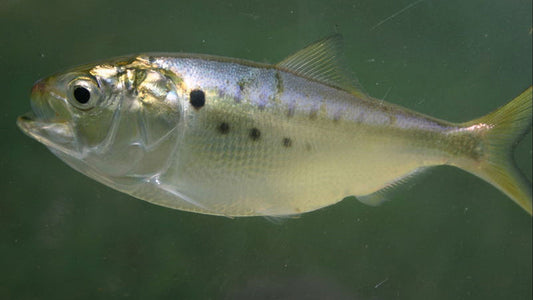
When Does a Trout Fly Reel Become More Than Just a Line Holder?
Share
It is a very rare occasion that the term “line holder” doesn’t come up in conversation when outfitting customers with reels for trout and landlocked salmon. But, when does a reel become more than just a line holder? Here are a few reasons why you may want to consider investing a little more in your trout reel and why it can be much more than just a line holder.
Trophy Trout:
Whether you’re targeting them or you just happen to come across one in your adventures, losing big trout sucks. Most trout reels these days have drag systems that are more than powerful enough (provide enough drag pressure) to handle any trout or salmon situation. The advent of more modern/sophisticated drag systems such as disc drags are an improvement on click and pawl systems. However, there are a couple of other major factors that play into what makes a good reel for big trout. A smooth, consistent, high quality drag system plays a crucial role in dealing with light tippets. A reel with a drag that is, for lack of better words "jerky" and erratic, have tendencies to break lighter tippets or pop out hooks, especially when dealing with with large and/or sporadic fish. You would be surprised how much of a difference a quality drag system can make when protecting lighter tippets. Most quality fly reel manufacturers spend a lot of time engineering and constructing their drags, especially higher end models. You can have all the "stopping power" in the world with your reel/drag, but if it cannot provide smooth pressure with a good start-up inertia, it really doesn't matter much. In addition to being smooth, a drag that can be easily adjusted can also be important. This has a lot to do with personal preference, however one thing that should be considered is that it is advantageous to have a drag that doesn’t increase too much with tiny incremental adjustments. This way you can tweak the pressure you are putting on a fish by micro amounts without risking making too much of an adjustment and breaking off that fish when they make a run.
"When I am guiding and one of my clients hooks into a large trout, I will immediately tell them to "get that fish on the reel!"" This is one of the best ways of increasing the chances of landing that fish especially in faster or pocket water." (Josh Thelin)
Saltwater:
In many places, including here in Maine, sea run trout are becoming more and more popular to target. In a very similar way for our local striped bass fishery, we suggest using a fully anodized reel for sea run trout. Corrosion protection, as well as a sealed drag system can greatly increase the life of the reel. It is really the only way to prevent a reel from breaking down in saltwater. Saltwater is notorious for being rough on gear and can destroy lesser quality reels in a single season. So, even if the reel does not have a sealed system, a better manufactured reel/drag with higher quality components goes a long way!
Another fun opportunity with a saltwater worthy reel is targeting schoolie striped bass in the spring before the big ones show up. A 20” striper on a 6 or 7 weight rod will give you a run for your money and since they are usually first keyed in on small bait, a 6 or 7 weight rod can be a great way to target stripers in the spring.
Remember: No matter what reel you have, please remember to rinse your gear off after use in saltwater! Bringing a water bottle with you to quickly rinse your gear afterwards can be helpful if you are not in a situation where you can use a hose, sink, etc.
Cold Weather:
Cold weather fishing isn’t for everyone, but for those who are brave enough to fish in sub 32 degree weather, gear is everything. From warm clothes, to putting de-icing paste on the guides of your rod, to a durable reel, everything needs to be considered. A sealed drag system on your fly reel comes into play big time when fishing in freezing temperatures. If water is allowed to make its way into a drag system, freeze, and expand, it can cause problems. In the least it will cause short term performance issues with the drag that day. Another thing to consider is durability. Some of the super light weight reels made these days are so fragile that an ice jam in your reel can cause the metal to crack. It is not always wise to go with the lightest gear possible if it compromises durability. A lot of the very weight forward fly lines these days cast and balance better on reels with a little more mass.
Longevity:
This should be the most obvious reason. As the saying goes you get what you pay for. This is very true with trout reels. It's likely that a lesser reel might get you by for a season or so, but it will need replacing/repair sooner than later. If you want a reel that will last a lifetime that you can also hand down to your grandchildren, consider making that slight just up to a better quality reel.
Our Favorite Trout Reels:
Hatch Iconic
![]()
Galvan Rush LT

Waterworks-Lamson Guru S-Series

Sage Spectrum

By: Joe Webster + Josh Thelin


